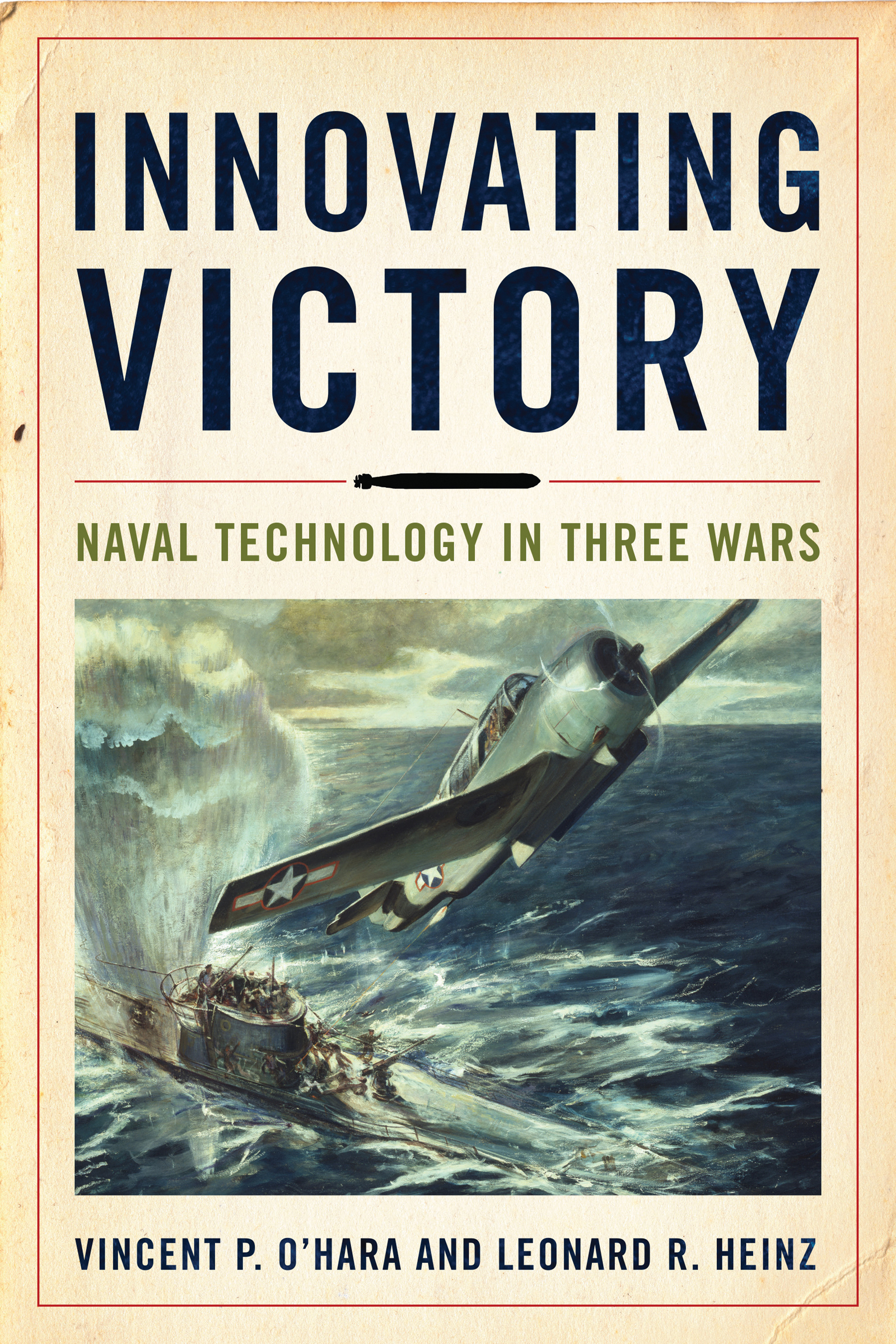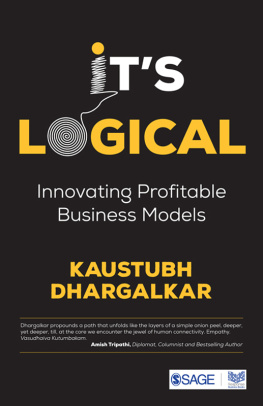Vincent P. OHara - Innovating Victory
Here you can read online Vincent P. OHara - Innovating Victory full text of the book (entire story) in english for free. Download pdf and epub, get meaning, cover and reviews about this ebook. publisher: Naval Institute Press, genre: History. Description of the work, (preface) as well as reviews are available. Best literature library LitArk.com created for fans of good reading and offers a wide selection of genres:
Romance novel
Science fiction
Adventure
Detective
Science
History
Home and family
Prose
Art
Politics
Computer
Non-fiction
Religion
Business
Children
Humor
Choose a favorite category and find really read worthwhile books. Enjoy immersion in the world of imagination, feel the emotions of the characters or learn something new for yourself, make an fascinating discovery.

- Book:Innovating Victory
- Author:
- Publisher:Naval Institute Press
- Genre:
- Rating:4 / 5
- Favourites:Add to favourites
- Your mark:
- 80
- 1
- 2
- 3
- 4
- 5
Innovating Victory: summary, description and annotation
We offer to read an annotation, description, summary or preface (depends on what the author of the book "Innovating Victory" wrote himself). If you haven't found the necessary information about the book — write in the comments, we will try to find it.
Innovating Victory — read online for free the complete book (whole text) full work
Below is the text of the book, divided by pages. System saving the place of the last page read, allows you to conveniently read the book "Innovating Victory" online for free, without having to search again every time where you left off. Put a bookmark, and you can go to the page where you finished reading at any time.
Font size:
Interval:
Bookmark:


NAVAL TECHNOLOGY IN THREE WARS
VINCENT P. OHARA LEONARD R. HEINZ
NAVAL INSTITUTE PRESS
Annapolis, Maryland
Naval Institute Press
291 Wood Road
Annapolis, MD 21402
2022 by Vincent P. OHara and Leonard R. Heinz
All rights reserved. No part of this book may be reproduced or utilized in any form or by any means, electronic or mechanical, including photocopying and recording, or by any information storage and retrieval system, without permission in writing from the publisher.
Library of Congress Cataloging-in-Publication Data
Names: OHara, Vincent P., [date] author. | Heinz, Leonard R., author.
Title: Innovating victory : naval technology in three wars / Vincent P. OHara, Leonard R. Heinz.
Other titles: Naval technology in three wars
Description: Annapolis, Maryland : Naval Institute Press, [2022] | Includes bibliographical references and index.
Identifiers: LCCN 2021052331 (print) | LCCN 2021052332 (ebook) | ISBN 9781682477328 (hardcover) | ISBN 9781682477335 (epub)
Subjects: LCSH: Naval art and scienceTechnological innovationsHistory 20th century.
Classification: LCC V53 .O33 2022 (print) | LCC V53 (ebook) | DDC 359.009/04dc23/eng/20211102
LC record available at https://lccn.loc.gov/2021052331
LC ebook record available at https://lccn.loc.gov/2021052332
 Print editions meet the requirements of ANSI/NISO Z39.48-1992
Print editions meet the requirements of ANSI/NISO Z39.48-1992
(Permanence of Paper). Printed in the United States of America.
30 29 28 27 26 25 24 23 229 8 7 6 5 4 3 2 1
First printing
Figures by Vincent P. OHara
To the memory ofCaptain Stephen F. Davis Jr. (19622008),who some years ago encourageda rank amateur to persevere
This is new territory for both authors, who approached this work on technology with nontechnical backgrounds and during a challenging period for learning new things. We have been sustained and inspired by a network of supporters and colleagues, particularly our friends in the Western Naval History Association. We would like to thank in particular Enrico Cernuschi, Trent Hone, John T. Kuehn, and Michael Yaklich for reading and commenting on the entire manuscript, and Michael Whitby, who has been generous with his research. Other readers include Robert C. Stern, Sam J. Tangredi, and Stephen McLaughlin. We thank our editor at Naval Institute Press, Glenn Griffith, and the wonderful people there for bringing this book to print in such excellent fashion. OHara thanks his familydaughter Yunuen, son Vincent, and wife Mariafor their past and ongoing support, while Heinz thanks his wife Meg, daughter Julia, son David, and granddaughter Maggie, who loves technology but prefers Minecraft to mines.
| AIO | action information organization |
| ASV | air-to-surface vessel (aerial radar) |
| ASW | antisubmarine warfare |
| BEF | British Expeditionary Force |
| BIR | Board of Invention and Research |
| CIC | combat information center |
| cm | centimeter |
| CNO | Chief of Naval Operations |
| COS | chief of staff |
| DAT | Dfence Arienne du Territoire |
| DEM | Dtecteur Electro-Magntique |
| DF | direction-finding |
| ECM | electronic countermeasures |
| GHG | Gruppen-Horch-Gert |
| GRT | gross register tonnage |
| HF/DF | high-frequency direction-finding |
| HVB | Handelsschiffsverkehrsbuch |
| IFF | Identification Friend or Foe |
| kg | kilogram |
| KHz | kilohertz |
| km | kilometer |
| kw | kilowatt |
| m | meter |
| MHz | megahertz |
| MTB | motor torpedo boat |
| PPI | plan position indicator |
| RAF | Royal Air Force |
| SIGINT | signals intelligence |
| SKM | Signalbuch der Kaiserlichen Marine |
| TNT | trinitrotoluene |
| UHF | ultra high frequency |
| UN | United Nations |
| VB | Verkehrsbuch |
| VHF | very high frequency |
1 nautical mile = 2,205 yards, 1,852 meters, or 1.151 statute miles
1 knot = 1.852 kilometers/hour or 1.151 statute miles/hour
1 meter = 1.094 yards
1 yard = 0.9144 meters
1 centimeter = 0.3937 inches
1 inch = 2.54 centimeters
1 kilogram = 2.205 pounds
1 pound = 0.4536 kilograms
O for a muse of fire, that would ascendThe brightest heaven of invention.
SHAKESPEARE, HENRY V, ACT 1, PROLOGUEAnimals fight with horns, teeth, and claws. Humans can bite and scratch as well, but to win, they use technology. The word technology is a compound of two Greek roots, tekhne (craft) and logia (learning). In essence, technology is the practical application of knowledge expressed through the use of a device.
Shaped stones and sharpened sticks are Paleolithic examples of combat technology. A raft that transports warriors over water is one expression of naval technology; a nuclear-powered ballistic missile submarine is another. Modern naval technology is the sum of the elements involved in the invention, development, production, and use of specialized weapons, tools, and platforms to fight at sea. Superior technology can confer a powerful advantage. Greek fire, a weapon, allowed the Byzantine navy to repeatedly triumph over more numerous foes. The Confederate armored ship Virginia, a platform, destroyed the wooden vessels of the Union navy at will. Centimetric radar, a tool, allowed Allied aircraft during World War II to spot submarine conning towers at night. But it is the nature of technology that such advantages are rare and often fleeting.
The twentieth century was a time of profound technological change. In naval terms, this change came in four major waves, with the first three climaxed by a major naval war. The first wave started in the mid-nineteenth century as coal-fired steam engines replaced sail, armor was developed, guns and mines were improved, torpedoes appeared, and radio was introduced. This wave peaked in the Russo-Japanese War. In the second wave, which started in 1905 and ran through World War I, naval warfare became three-dimensional with the development of practical submarines and aircraft. The armored gunnery platform reached its acme of power and influence and imperceptibly began to fade in importance. The third wave, which lasted through the end of World War II, moved naval warfare fully into the electromagnetic spectrum as technologies such as radar and sonar expanded perceptions beyond the horizon and beneath the waves, revolutionized the collection and use of information, and saw the introduction of practical guided weapons. The fourth wave is under way. Naval warfare has entered another dimensionstarting with the splitting of the atom and progressing to satellites, computers, drones, data networks, artificial intelligence, and a new generation of weapons using magnetic and directed energy. The fourth wave has lasted the longest, not because the pace of invention has slowedit has in fact acceleratedbut because since 1945 there has been no major peer-to-peer naval warthat is, a total war between opponents with similar technological resourcesto prove these new technologies in all-out combat.
Font size:
Interval:
Bookmark:
Similar books «Innovating Victory»
Look at similar books to Innovating Victory. We have selected literature similar in name and meaning in the hope of providing readers with more options to find new, interesting, not yet read works.
Discussion, reviews of the book Innovating Victory and just readers' own opinions. Leave your comments, write what you think about the work, its meaning or the main characters. Specify what exactly you liked and what you didn't like, and why you think so.







